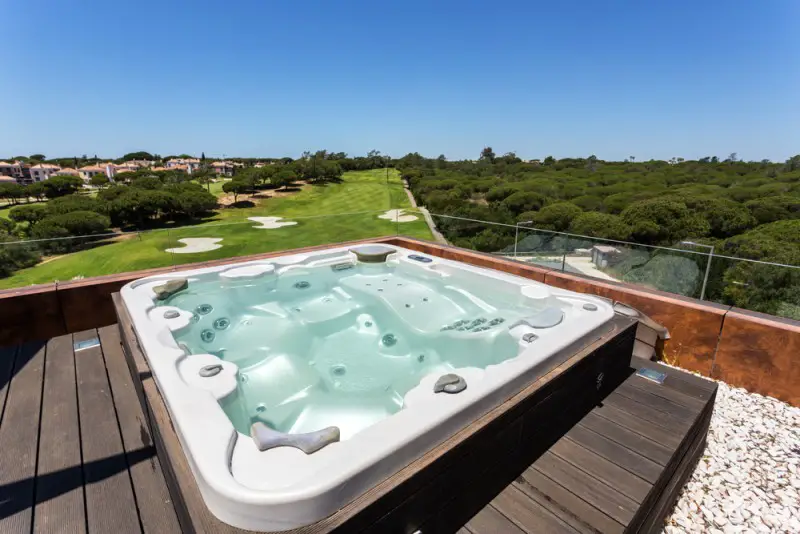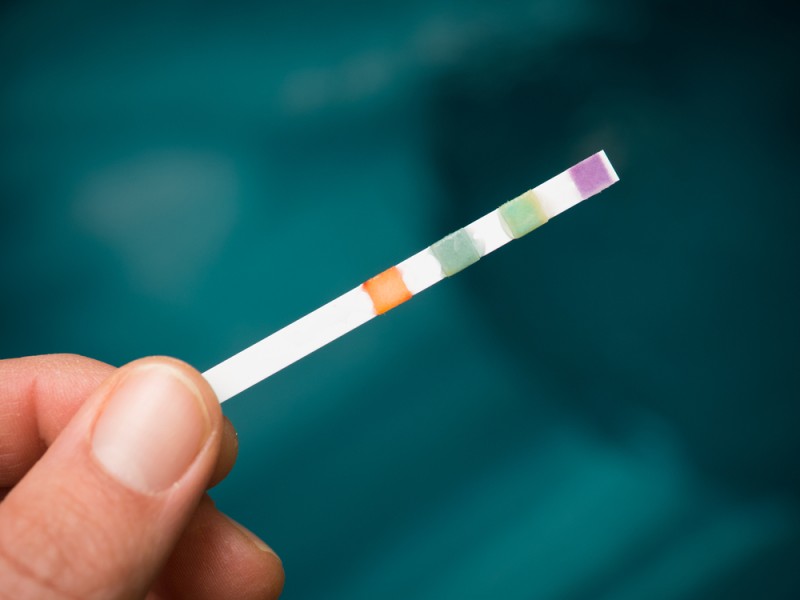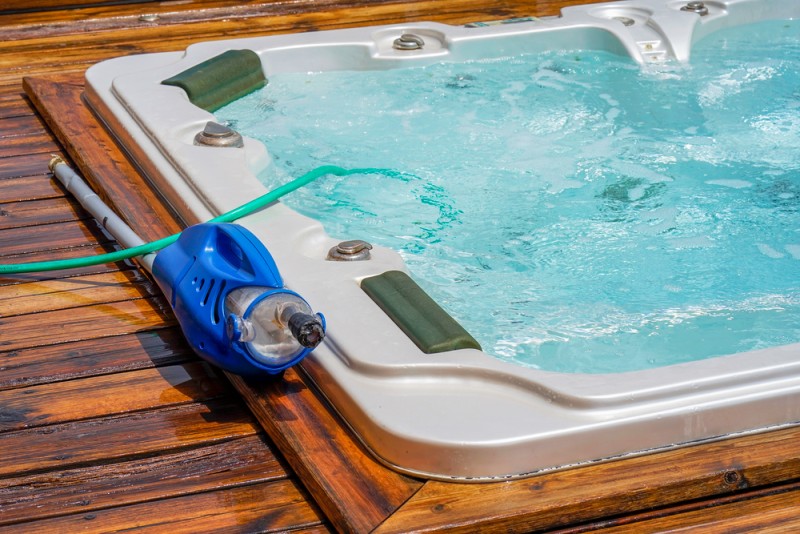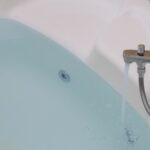The least that you want from your hot tub is for it to be slimy. Gross, right? Your initial feeling might be disgust. But usually, the main reason for a slimy hot tub is the lack of proper hot tub maintenance.
Luckily, this is a common problem faced by most inflatable hot tub owners. One that can be solved with a few maintenance tips. So dont worry; it will not be the end of your warm bath experience.
Tune in to this article until the end as we discuss the main causes of slime in the hot tub environment and how to prevent them.
Top Reasons Why A Hot Tub Is Slimy
It is important to spot the reasons why a hot tub becomes slimy to make necessary solutions to fix it. In the long run, if left untreated, it can cause serious harm to you and your hot tub.

You may get a slimy feeling in your hot tub for the following reasons.
1. Imbalance Hot Tub Chemicals
Hot tub chemicals can occasionally slim the spa water, notably if they raise pH and make it too alkaline. The pH should be maintained in a hot tub at 7.4 and 7.6. In this pH range, sanitizers often function best.
When maintaining the spa water balance, measure your sanitizers precisely and use test strips to obtain a visual read on your chemical levels like chlorine and ph. This buildup of chemicals may make it feel unpleasant to soak in.
2. Presence Of Biofilm
Hot tub biofilm formation happens when the bacteria in your hot tub water start interacting with the body oils, cells, and other organic pollutants left behind by swimmers in a hot tub or swimming pool. This produces a slimy coating of film that frequently hides within the plumbing or drainage system of the spa. Particularly inside the hot tub’s plumbing and hot tub walls, the water is less prone to be drained and cleaned. This part of the hot tubs provides the ideal warm and damp conditions for these bacteria to proliferate.
The slime you feel is a coating of protective mucus created by bacteria resistant to chlorine and bromine, making wanting to get rid of this slime an extremely difficult issue. But don’t worry; there are solutions to prevent hot tub biofilm below.
3. Presence Of Mold Or Algae
An infestation of mold, mildew, or algae is another frequent reason the water in your hot tub seems to have biofilm. These impurities hiding in your hot tub are typically quite simple because they tend to move toward the water’s surface and accumulate as a coating of sludge with a black or green tinge.
The best way to avoid hot tub slime, mold, and algae growth is by regularly cleaning your hot tub with a filter and balancing your pH level. These water contaminants are most likely to occur by not adding the proper amount of chlorine sanitizer to the water or every so often due to broken filters that don’t do their job properly.
4. Build-Up Of Scale
If you reside in a location with hard water, chances are good that you’re sick and tired of chalky scale clogging your plumbing. Due to its high mineral content, hard water can cause white-scale deposits to grow around your hot tub’s pipes, pumps, and jets.
Hard water will become a bigger issue if your spa water’s pH and alkalinity levels are not managed between 7.2 and 7.8. Keep an eye on those ph levels because the more alkaline the hot tub water is, the more minerals will accumulate and cause a chalky discomfort.
Tips To Prevent Hot Tub From Being Slimy
Being proactive rather than reactive is the best method to handle biofilm. Hot tub slime can be avoided with routine cleaning, sanitizing, and maintenance. Follow these tips to prevent your it from being slimy.

1. Balance Your Water Chemistry
To determine your water’s pH and alkalinity levels, test and balance it once each week. An ideal pH range is between 7.2 and 7.4. Anything less than this will be overly acidic, and anything more will make your sanitizer less effective and possibly cloudy.
The typical alkalinity range for spas is 60 to 120 ppm. Still, since spas are made of various materials, you should speak with your spa’s manufacturer to find the precise ranges. After adding a sanitizer, test the spa for the recommended ppm level.
2. Clean The Hot Tub Filters
Maintaining a clean filter to defend against bacteria, algae, biofilm, and other potentially dangerous impurities is crucial. Once a week, use water to rinse out your filter. Monthly, use the chemical rinse to give it an additional and deeper clean.
3. Use Hot Tub Cover When Not In Use
When not in use, don’t let a hot tub uncovered; it should always be covered. Not only will it prevent heat loss and save energy costs, but it will also prevent rainwater, animals, and debris from entering the water, keeping it cleaner for a longer period.
4. Drain And Clean It Regularly
You may prevent the buildup of chemicals and other problems if you clean the hot tub shell once every few months by draining and cleaning it. Performance problems that might otherwise require expensive repairs can also be avoided.
Frequently Asked Questions
What Happens If You Put Too Much Chlorine In Your Hot Tub?
Chlorine poisoning could arise from using a spa with a lot of chlorine, which could have negative health effects. The surfaces of hot tubs quickly deteriorate due to high bromine or chlorine levels. But before getting in, you should always achieve the necessary chemical balance with proper water chemistry.
Can Hot Tub Biofilm Make You Sick?
Yes. Hot tubs are susceptible to biofilm development, which can grow dangerous germs that can make users sick on hot tub surfaces. If left untreated, hot tub biofilm can also seriously destroy your hot tub’s piping and filters.
How Do You Get Rid Of Biofilm In A Hot Tub?
This can be done by providing the filter a 72-hour soak in a pail of highly chlorinated water. The spa piping should be purged and decontaminated using a biofilm cleaning solution to make the hot tub clean.
Conclusion

You should not overlook or dismiss the slimy feeling of your hot tub. If it signals anything certain, your hot tub water is not clean and safe for soaking. In this case, it is best to look for the possible causes, which you can refer to from the information above. Once identified, fix it immediately and practice the tips above for your hot tub maintenance.

